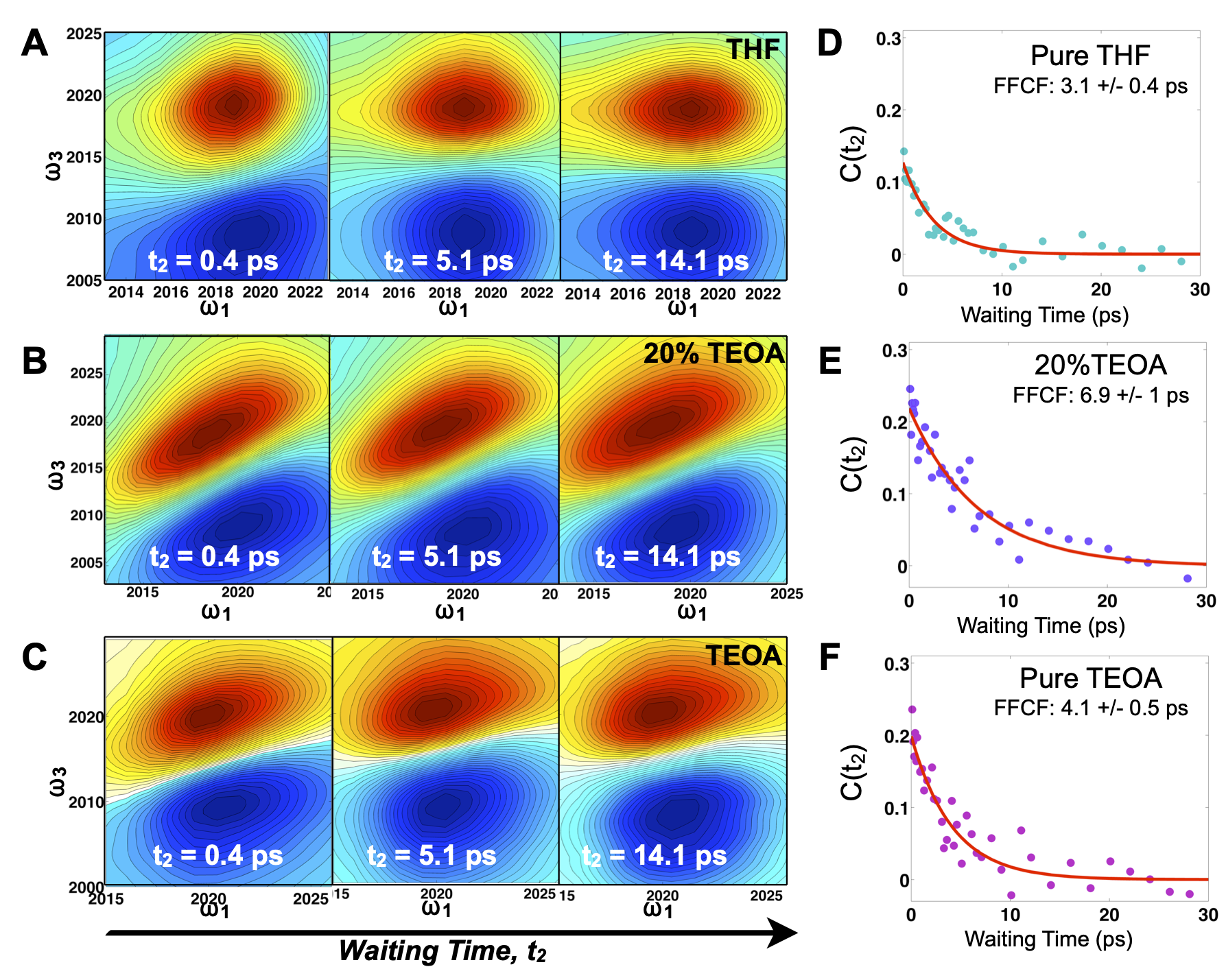Photocatalysts have the potential to use light to power the conversion of greenhouse gases into useful reagents
Rhenium diimine catalysts are versatile
Rhenium diimine complexes are among the best homogeneous photocatalysts capable of reducing carbon dioxide. The complex photocycle has many intermediates, and some are unknown. Using combinations of linear and multidimensional infrared (2D-IR) spectroscopy, we are disentangling mechanistic details and structural dynamics.
We use 2D-IR spectroscopy (above) to monitor the timescale for frequency fluctuations that are induced by interactions with the environment (such as the solvent, a protein, a membrane, etc.). In the rhenium diimine case, we found a pronounced slowdown in spectral dynamics in a mixture of two solvents, THF and triethanolamine (TEOA). The TEOA acts as an electron donor in homogeneous photocatalysis, but is present at relatively high concentration (~20% by volume). The slowdown is due to the dynamical exchange of dissimilar solvent molecules in nearest solvation shells. You can read all about this work in this paper.
Towards in operando 2D-IR
A major goal of studying catalysis is to watch the reactions as they happen. We are using steady-state light excitation and in situ electrochemistry to track structural dynamics of photo- and electrocatalysts as they function in real time. We are actively developing 2D-IR spectroscopy to probe in operando (“functioning”) photo- and electrocatalysis. We are excited to see how these powerful spectroscopic techniques can illuminate reaction mechanisms and new views of chemical dynamics in key catalytic processes capable of turning harmful greenhouse gases into practical chemical feedstocks and fuels. Read about our first demonstration of in situ, transmission 2D-IR of a carbon dioxide reduction electrocatalyst.
unlimited potential
Electrochemistry may turn out to be the primary way to convert carbon dioxide to useful chemicals. We have developed a robust protocol for combining electrochemistry with 2D-IR spectroscopy. We are very excited to open up vast new areas where 2D-IR spectroelectrochemistry can be used to inform many important chemical disciplines.



